Peace and Nonviolence

I believe in love. I don’t subscribe to any particular religion.
Feroz, a Hazara who is a Shia Muslim, lived with me in a community in Kabul with 13 other Afghan Peace Volunteers, including Tajiks and Pashtuns, who are Sunnis.
This is a community established with the intention of learning about and practicing nonviolence, a little like an Afghan version of Gandhi’s ashram.
One day, there were black faces and a curt exchange of words.
“What meaning does praying with the little piece of stone have anyway?” Bashir, a Tajik, who is a Sunni Muslim, snapped at Feroz, a Hazara, who is a Shia Muslim.
“Why should that bother you? It’s important to us. Your way of praying isn’t particularly good either, praying with your hands ‘closed,’” Feroz retorted. Shia Muslims like Feroz pray with their hands and arms in an ‘open’ posture, and till today, some Shia and Sunni religious leaders make an issue of it.
The ways we reach out to God should be happy endeavors, but these ways can become bones of contention, especially if they’re deemed to be special or exclusive paths to God.
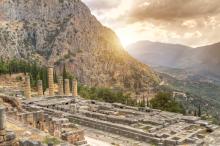
Thank the gods we don’t believe in the utterances of oracles anymore. We don’t search for omens in the entrails of sacrificed animals or believe that women in drug-induced trances can foretell our destiny. Because the ancient Greeks fell for this superstitious mumbo jumbo, they were led into two disastrous wars that had devastating consequences. The great anti-war playwright Euripides offers his critique of wars and oracles in his play, Iphigenia at Aulis, now playing at the Court Theater in Chicago. My talented friend Jeanne T. Arrigo is in the chorus of this production and I have her and the Court Theater to thank for bringing this ancient gem to my attention.
Two Oracles, Two Devastating Wars
Iphigenia at Aulis was first performed a year after Euripides’ death in 406 B.C.E. He wrote it in response to Athens’ nearly 30-year war against Sparta. Known as the Peloponnesian War, it ended in 404 B.C.E. with Athens’ surrender, her fleet destroyed, and the city starving after a four-month siege. Euripides felt that part of the reason Athens went to war in the first place was that the Oracle at Delphi had predicted victory “if they did their best.” Not only did this encourage the outbreak of the war, but it probably made a negotiated settlement impossible. Because why would anyone cease the pursuit of victory if victory has been assured? The Oracle’s prophecy lent an aura of inevitability to the outcome of the war, which in effect robbed the Athenians of their agency. They marched to war like automatons in service of the gods.
To convince Athenians that they were on a path of self-destruction, Euripides dramatized a scene from the beginning of a previous bad military adventure, the Trojan War. As the Homeric story is retold by Euripides, the Greek armies are assembled in the port city of Aulis. Agamemnon is their general, ready to lead a thousand ships to attack Troy to recover Helen, who has run off with young Paris of Troy. The nation has mobilized to avenge this insult to Helen’s husband, Menelaus (Agamemnon’s brother) and all of Greece.
Unfortunately for Agamemnon, there is no wind. The soldiers soon tire of waiting and, despite their war lust, they are threatening to go home. But an Oracle has foretold that Artemis will raise the winds and bring certain victory on one condition: that Agamemnon sacrifice his daughter Iphigenia to her. Under pressure from the troops and his own lust for glory, Agamemnon sacrifices his daughter and the thousand ships are launched. The war is on, and the play ends with the fleet sailing eagerly across the sea.
Six weeks after ISIS overtook their village outside of Mosul, Iraq, Sief and Jacob Jebrita said they received an official cease and desist letter from the terrorist group saying their work was forbidden under Islamic law. The two brothers, partners in a small photography and videography business, lost their sole source of income. But that was just the beginning.
Sief and Jacob shared their story while sitting in St. Mary, Mother of the Church in Amman, Jordan, with a delegation of religious media. The church, led by Fr. Khalil Jaar, has become home to more than 150 Iraqi Christian refugees who have fled their homes while ISIS continues to push through the region.
Because of their Christian faith, Sief, Jacob, and their families were targeted by ISIS. They told me of a soldier ripping an earring out of a girl’s ear, slicing it open because it was not acceptable for her to wear jewelry. As ISIS militants forced people out of their homes, they would not allow them to bring anything with them at all except the clothes on their backs. They told me the story of one mother walking with her little boy who was forced to leave behind his bottle of milk after a soldier knocked it to the ground and shouted at them. As the situation worsened, they said they saw Yazidi men killed for refusing to accept Islam, and Yazidi woman sold into slavery in Mosul – $500 for younger women and $100 to $300 for older women.
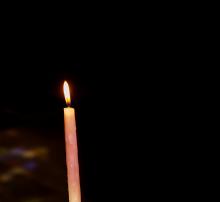
In the wake of the latest escalation of the U.S. “war on terror,” it’s time to remember the origin of Veterans Day. In 1926, Congress officially recognized the commemoration of Armistice Day on Nov. 11 with the exhortation, “the recurring anniversary of this date should be commemorated with thanksgiving and prayer and exercises designed to perpetuate peace through good will and mutual understanding between nations.” Armistice Day commemorated the day when World War I hostilities ceased, and had been celebrated informally since 1919 as a day to work for peace.

There is much reason to be distressed about the current scope of the American political sphere. After Tuesday’s midterm elections, constituents on both sides of the aisle voiced legitimate concerns about the direction of our country. Yet, on Wednesday morning there was a glimmer of great hope for the American people.
In Washington state, ballot measure I-594 introduced stricter background checks into state gun protocol. Why is this an important moment of triumph for the American people?
On I-594 the people won. Not the lobbies. Not the politicians. The people.
Washington voters made history by becoming the first state to expand background checks to all gun sales by popular vote. By strategically moving the fight for commonsense gun policies from gun lobby-dominated legislatures to the ballot box, democracy in Washington state was able to function on a person-by-person basis.
PARDEEP KALEKA and former white supremacist Arno Michaelis clasped hands during a radio interview on the first anniversary of a mass shooting that changed both of their lives. Their embrace was the ultimate symbol of brotherhood—two starkly different backgrounds united by a common goal of peace and understanding in an oftentimes cruel and unforgiving world.
Pardeep Kaleka is a member of the Sikh faith community. His father was one of the six worshippers killed on Aug. 5, 2012, at the Sikh temple, or gurdwara, in Oak Creek, Wis. Three more were injured that day before the man opening fire on the temple was wounded by the police. The gunman then prepared for one final pull of the trigger, taking his own life.
The shooter was Wade Michael Page, a white supremacist, acting on his own volition that Sunday morning. He had spent his life practicing violence and hatred toward all kinds of people he felt to be “different” from him. This hatred culminated in a final unthinkable act, killing six people in cold blood at their holy place of worship.
There was angst, confusion, and grief among the Wisconsin Sikh community after this terrible tragedy. But where many may have expected anger from those most deeply affected, the Sikhs responded with something thoroughly refreshing: peace.
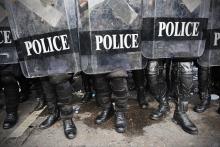
AS A FORMER reserve police officer who has taught ethics at two police academies, I followed the news very closely after 18-year-old Michael Brown was shot to death by police officer Darren Wilson in nearby Ferguson, Mo. When I saw the military equipment of the St. Louis County Police—especially the sharpshooter on top of an armored vehicle aiming his rifle at the protesters—I said to my wife, “This may turn out to be very, very bad.”
Sen. Claire McCaskill argued in the midst of the protests that St. Louis County should “demilitarize the police response” in Ferguson, telling reporters, “The police response has been part of the problem.”
The militarization of police has been trending over the past few decades. When the thin blue line resembles an occupying force, it exacerbates racial tensions in neighborhoods and communities, making things worse for everyone, including the police.
Some communities are starting to push back. For instance, the city council of Davis, Calif., recently directed its police department to get rid of a mine-resistant, ambush-protected vehicle (worth $700,000) that it had received free from the U.S. military’s surplus program.
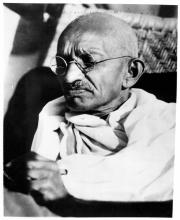
Mention the concept of “nonviolent resistance” and two names immediately come to mind: Mahatma Gandhi, the Indian leader who led his nation to independence from British colonial rule, and Martin Luther King Jr., who led the struggle for civil rights in America. Tragically, both champions of nonviolence were assassinated: Gandhi in 1948 and King 20 years later. Today many people throughout the world revere both advocates of nonviolence.
While Gandhi and King were largely successful in their efforts, the question remains whether nonviolent resistance is always the most effective strategy in the face of radical evil, injustice, and aggression. After all, there remains a thin line between nonviolence and martyrdom.
Professor Charles DiSalvo of West Virginia University has recently published “M.K. Gandhi, Attorney at Law: The Man Before the Mahatma,” an excellent study of Gandhi’s 20 years as a young attorney in South Africa where he faced anti-Indian stereotyping and bigotry.
Interestingly, Gandhi’s two closest friends were Jews he knew in Durban and Johannesburg. But despite Gandhi’s personal friendships and his commitment to freedom and security for his own people, he was indifferent, at best, or naive, about the Nazi persecution of Jews.

Last week’s school shooting in Marysville, Wash., has us all asking the question again: Why did this happen?
Snohomish County Sheriff Ty Trenary gave voice to the despair many are feeling as we search for answers. “The question everybody wants is ‘Why?’ I don’t know that the ‘why’ is something we can provide.”
Why did Jaylen Fryberg text his friends and family members to join him for lunch only to shoot them and then shoot himself? Whenever these tragedies occur we are tempted to blame the shooter by making him into a monster. We label the shooter “mentally ill,” claim that he was isolated from his peers, or was a generally troubled youth.
The answer to the question “Why?” has usually been to blame the shooter. We make the shooter into a monster because it allows us to make sense of senseless violence. Why did this tragedy happen? Because he was evil.
But Fryberg’s case won’t allow such easy answers. By all accounts, he was a popular and happy young man, seemingly incapable of causing such harm.
This horrific shooting is so scary because no one saw it coming. If a popular kid like could commit such a heinous act, anyone could do the same. Fryberg’s case deprives us of the easy out of blaming another. The only thing left is to face our own violence.

Pope Francis said Oct. 23 that keeping inmates isolated in maximum security prisons is “a form of torture,” and called life sentences “a hidden death penalty” that should be abolished along with capital punishment.
“All Christians and people of good will are called today to struggle not only for abolition of the death penalty, whether legal or illegal, and in all its forms, but also to improve prison conditions, out of respect for the human dignity of persons deprived of their liberty,” the pope told delegates from the International Association of Penal Law.
“And this I connect with life imprisonment,” he continued. “Life imprisonment is a hidden death penalty.”
The pope noted that the Vatican recently eliminated life imprisonment from its own penal code, though that move was largely symbolic.
In the wide-ranging address, Francis denounced practices that are widespread in many regions of the world, such as extrajudicial executions and detentions without trial, which he said account for more than half of all detentions in some countries.
Francis also denounced corruption in penal systems, calling it “an evil greater than sin.”
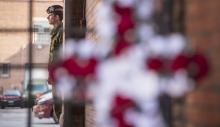
Yesterday a gunman opened fire in Ottawa and killed a soldier at a war memorial. It is a stark reminder of the kind of world we live in every time a life is taken through violence. My prayers are with the victim and his family and for the authorities leading the investigation in trying to understand the shooter’s motives.
Like Ebola and ISIS, the shooting is spreading fear around the world. It is not unnatural to experience fear as a reaction to danger. However, reacting out of fear instead of wisdom is the mistake we must stop making.
What happened in Ottawa is also a reminder for me that while we can’t remove all violence, we can take steps as a country to reduce it. In 2011, the last year complete numbers are available, 32,163 died in America due to gun related deaths. In Canada that same year the number was 781. While gun violence can happen anywhere, as Ottawa shows, it happens much more in the United States than any other developed country.
Why the discrepancy? The full answer is complicated, but one of the driving factors is not.
A Sandy Hook Father’s Plea from Sojourners on Vimeo.

Michael Brown. Sandy Hook. Trayvon Martin. Aurora. Columbine.
Within the last decade, the narrative of children and teenagers being killed by gun violence has become an all-too-familiar narrative in the American public sphere. In a recent report compiled by The Brady Campaign, statistics revealed that in 2011 alone, 19,403 children were shot and 2,703 children and teenagers lost their lives to guns.
That’s seven of America’s youth under the age of 20 killed every day.
In the book of Matthew, the disciples ask Jesus, “Who is the greatest in the kingdom of heaven?”
Jesus calls a child to join the group.
“Truly I tell you, unless you change and become like children, you will never enter the kingdom of heaven,” he answers.
If as Christians, children represent God’s creation in its most pure and innocent form, why is it that as Americans, we continue to let children die preventable deaths from gun violence? Gun control policies are a difficult discourse for the American public. Yet one thing we can all agree on is that children should not be killed.
Of the 2,703 children killed in 2011, 61 percent were homicides, 32 percent were suicides and 5 percent were unintentional shooting. These statistics propel gun-related deaths to the number two leading cause of death for youth in America.
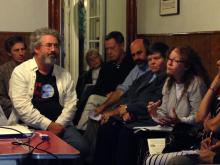
On Oct. 7, Georgia Walker and I appeared before Judge Matt Whitworth in a Jefferson City, Mo., federal court on a charge of criminal trespass to a military facility. The charge was based on our participation in a June 1 rally at Whiteman Airforce Base protesting drone warfare. Walker and I attempted to deliver a loaf of bread and a letter to the base commander, encouraging the commander to stop cooperating with any further usage of unmanned aerial vehicles, (drones) for surveillance and attacks.
The prosecutor, USAF Captain Daniel Saunders, said that if we would plead guilty to the charge, he would seek a punishment of one month in prison and a $500 fine. We told the prosecutor we could accept a “no contest” plea but were not willing to plead guilty. The prosecutor then said he would recommend a three-month prison sentence and a $500 fine. The judge refused to accept a “no contest” plea. We then requested a trial, which has been set for Dec. 10.

Kabul—“I woke up with the blast of another bomb explosion this morning,” Imadullah told me. “I wonder how many people were killed.” Imadullah, an 18-year-old Afghan Peace Volunteer from Badakhshan, had joined me at the APVs’ Borderfree Community Centre of Nonviolence.
The news reported that at least three Afghan National Army soldiers were killed in the suicide bomb attack, in the area of Darulaman. Coincidentally, the Afghan Peace Volunteers had planned to be at the Darulaman Palace that same morning. To commemorate Gandhi’s birthday and the International Day of Nonviolence, we wanted to form a human circle of peace at the palace, which is a war ruin. But the police, citing general security concerns, denied us permission.
Imadullah and Rauff, another APV member, continued discussing the attack. Rauff believes that the latest string of suicide bombings in Kabul have been in response to actions of the newly formed government. The Taliban condemned the new government — led by former World Bank official Ashraf Ghani and ex-warlord General Abdul Rashid Dostum — for signing the new U.S. /Afghanistan Bilateral Security Agreement (BSA).
Listening to Imadullah’s and Rauff’s concerns over the latest string of attacks, I wondered if I myself had become inured to this sober Afghan reality of perpetual war.
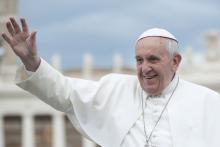
Religious leaders agree the Islamic State — also known as ISIL or ISIS — must be stopped. Their struggle is how best to do it.
“As mainstream religious leaders of different faiths get together, it strengthens the voice of moderation,” said Ibrahim Hooper of the Council on American-Islamic Relations, the nation’s largest Muslim advocacy group.
A group of mainstream Muslim scholars sought to strip the Iraqi and Syrian militants of any legitimacy under the cover of Islam in an open letter in Arabic issued Sept. 24.
U.S. Christian leaders have also spoken out and say they hope to dissuade youth from joining the Islamic State ranks by developing an alternative world view that counters the group’s religious claims.
“To offer a different world view endorsed by religions, as well as governments, in the long term will go a long way to defeating its appeal to those who are looking to join them,” said Antonios S. Kireopoulos of the National Council of Churches. The council represents about 45 million Christians, from mainstream Protestants to “living peace” congregants.
Recent comments by Pope Francis about the conflict rocking the Middle East have left some religious leaders mixed about his intent.
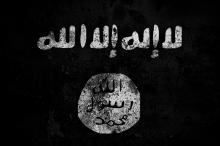
Whether ISIS is "Islamic," or a "state," it is definitely terrifying. As it terrorizes the Levant — killing Muslims, Christians, Jews, Yazidis, and other religious/cultural minorities in Syria and Iraq — and takes the lives of Western journalists, it strikes fear in the hearts of many.
Swirling around the alarming analysis are the rumors and realities of individuals from Europe and the U.S. joining the ranks of ISIS and fighting for their "cause."
The intelligence organization Soufan Group recently released a report stating that fighters from at least 81 countries have traveled to Syria since its three-year conflict began. Hundreds of recruits come from nations like France, Germany, the UK, and the U.S.
Of all the fearful intimations of this conflict, this feature seems to be the most frightening to many in the West. Could it be that my neighbor is a secret jihadi? Are redheads (a "pure" European stock) more prone to terrorism? Are mosques their hideouts? Regardless of the judiciousness of these questions, underlying them all is the question "why?" Why would someone leave the West to fight for ISIS in Syria and Iraq?
According to the Soufan report, those that leave for the Middle East to fight are typically 18-29 year-old men (some as young as 15) and some Western women who join with their spouses, or come alone to become "jihadi brides." These men and women are Islamic, often second or third generation immigrants, though very few have prior connections with Syria.
Why do they join? Is it religious devotion? Psychological imbalance? Tendency toward radical movements and anarchy? All of these motivations may play a part, but my argument is that these men and women who leave their Western homes for the dunes of terror are lonely.
These Western jihadis are isolated — that is why they join ISIS.
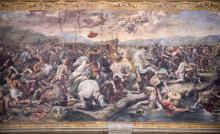
Christ-followers are given another angle of vision, another mirror into our souls, in the person of Jesus Christ. No passage of Scripture points more acutely to this image than one of this week’s lectionary texts: Philippians 2:1-13. The Apostle Paul invokes the Christ hymn as a means of reminding us who we are called to be. He urges his readers to “be of the same mind” and to “have the same love” as the one who’s image they bear. Put simply, Jesus-followers are called to participate in a selfless, humbling, even self-emptying mode of being in the world.
How then ought Christ-followers respond to the religiously-inspired violence perpetrated by groups like ISIS/ISIL? I believe that Christ-followers, while denouncing all forms of violence—especially religious violence—ought to respond with compassion and sympathy.
We are able to move toward compassion and sympathy when we are able to articulate religious violence according to broader historical, geopolitical, and theological modes of analysis. What we require is something beyond bland appeals to ethical imperatives or capitulation to the rhetoric and presuppositions of religious extremists. We need a way to traverse the gulf that separates demonization from compassion, hatred from love.
My thinking about religious violence is sharpened by the work of my friend and mentor Ted A. Smith. In his forthcoming book, Weird John Brown: Divine Violence and the Limits of Ethics (Stanford University Press), Smith articulates a moral vision fueled by practical reason beyond that which is captured within an “immanent frame of causes and effects.” Smith writes explicitly to the concept of divine violence, which is a type of violence that claims some kind of immediate relation to that which is counted as holy, sacred, or ultimate. In light of Smith’s astute analyses, and following the model established by Christ Jesus, we may call Christians to a particular kind of understanding in the face of religious violence.

I write this essay on the eve of a US led air campaign that marks “the biggest direct military intervention in Syria since the crisis began more than three years ago.” There is no denying that ISIS/ISIL has captured the attention of the world through its religiously inspired acts of violence. The atrocities committed in recent months by ISIS/ISIL have left countless people of faith—including many devout Muslim leaders across the world—speechless.
Yet, one of the central aspects of religiously inspired violence is that it rails against silence. Whether it is Christian violence in Nigeria and Uganda, Hindu violence in Western India, Jewish violence in Gaza, or Islamic violence in Indonesia and Syria, acts of terror demand denunciation. The ubiquity of religiously inspired violence across cultures and religious traditions lends credibility to the belief of some that religion itself is the problem. My own Christian tradition treats our inclination to harm and even kill one another as symptomatic of our fallen natures; it is a mark of our propensity to evil. This is what makes religious violence so pernicious: it twists our one remedy so that it exacerbates the disease.
Violence—whether it arises out of a Quentin Tarantino film or a YouTube video of decapitation—captures our attention. Even as we are repulsed by the scope of human depravity, such acts of violence consume our attention. Scenes of violence are like a mirror into the darkest parts of our soul: we cannot bear the images we see, but neither can we turn away.
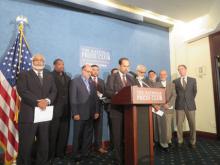
More than 120 Muslim scholars from around the world joined an open letter to the “fighters and followers” of the Islamic State, denouncing them as un-Islamic by using the most Islamic of terms.
Relying heavily on the Quran, the 18-page letter released Sept. 24 picks apart the extremist ideology of the militants who have left a wake of brutal death and destruction in their bid to establish a transnational Islamic state in Iraq and Syria.
Even translated into English, the letter will still sound alien to most Americans, said Nihad Awad, executive director of the Council of American-Islamic Relations, who released it in Washington with 10 other American Muslim religious and civil rights leaders.
“The letter is written in Arabic. It is using heavy classical religious texts and classical religious scholars that ISIS has used to mobilize young people to join its forces,” said Awad, using one of the acronyms for the group. “This letter is not meant for a liberal audience.”
Even mainstream Muslims, he said, may find it difficult to understand.

Pope Francis had ordered the arrest of a former Polish archbishop accused of child sex abuse in the Dominican Republic because the case was “so serious,” the Vatican said Sept. 23.
Jozef Wesolowski, who was defrocked by a Vatican tribunal earlier this year, is under house arrest inside Vatican City due to the “express desire” of Pope Francis, the Vatican said in a statement.
“The seriousness of the allegations has prompted the official investigation to impose a restrictive measure that … consists of house arrest, with its related limitations, in a location within the Vatican City State,” the Vatican’s chief spokesman, the Rev. Federico Lombardi, said.
Wesolowski was removed from his position in the Dominican Republic and recalled to the Vatican in August 2013 amid claims that he had abused boys in Santo Domingo.
The former archbishop is awaiting trial on criminal charges at the Vatican and could eventually face charges in the Dominican Republic and in his native Poland.